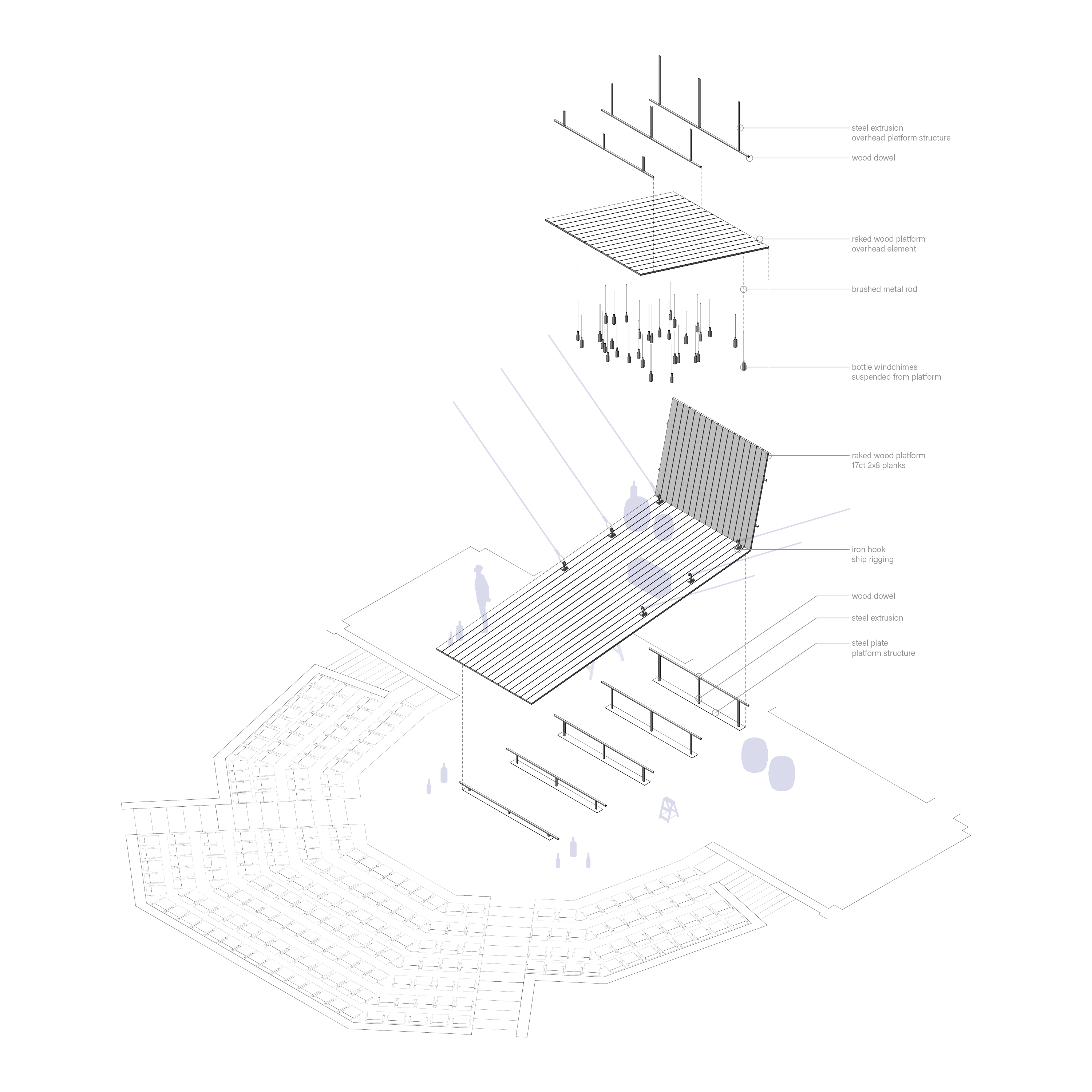the tempest
a play by William Shakespeare
The Tempest, Shakespeare’s last play, combines elements of mystery, romance, intrigue, comedy, and magic. Prospero, an expropriated duke, and his daughter, Miranda, have made a nearly-abandoned island their home. Prospero uses magic to conjure a storm to bring his crew (and usurping brother) to the island, with supernatural and fantastical results.
Through the use of the set and its properties, The Tempest’s scenic design tries to erase the preconception that William Shakespeare’s work is dated and difficult to understand. A lively, modern set which constantly transforms across the play’s five acts keeps viewers intrigued and immersed within the classic story.
Drawing inspiration from the nautical architecture of ships, then streamlining and distorting those forms, a raked wooden platform is placed center stage. This platform is dressed with ropes and large metal hooks indicative of the rigging of a ship. The stage is populated with a variety of props and trinkets (eg: barrels, ladders, chests, and bottles) that serve to reinforce the setting of the play. These props dance around the stage from scene to scene as players move and interact with them. An array of colored glass bottles is suspended from the overhead section of the platform; the bottles sway back and forth during times of excitement throughout the show. Singing as they collide, the bottles act as windchimes that entrance and engage the audience. By directly incorporating sound into the scenic design a new sense of curiosity is brought to stage. Common materials and a neutral color palette help the scenic design deliver a familiar, yet modern, display of a traditional story.
Through the use of the set and its properties, The Tempest’s scenic design tries to erase the preconception that William Shakespeare’s work is dated and difficult to understand. A lively, modern set which constantly transforms across the play’s five acts keeps viewers intrigued and immersed within the classic story.
Drawing inspiration from the nautical architecture of ships, then streamlining and distorting those forms, a raked wooden platform is placed center stage. This platform is dressed with ropes and large metal hooks indicative of the rigging of a ship. The stage is populated with a variety of props and trinkets (eg: barrels, ladders, chests, and bottles) that serve to reinforce the setting of the play. These props dance around the stage from scene to scene as players move and interact with them. An array of colored glass bottles is suspended from the overhead section of the platform; the bottles sway back and forth during times of excitement throughout the show. Singing as they collide, the bottles act as windchimes that entrance and engage the audience. By directly incorporating sound into the scenic design a new sense of curiosity is brought to stage. Common materials and a neutral color palette help the scenic design deliver a familiar, yet modern, display of a traditional story.
project information
location: new american theater; rockford, illinois
date: 2020
type: scenic design, unproduced
credits
project team: jacob t. middleton
recognition
published in ISSUE 17 featured by arkansas shakespeatre theatre
location: new american theater; rockford, illinois
date: 2020
type: scenic design, unproduced
credits
project team: jacob t. middleton
recognition
published in ISSUE 17 featured by arkansas shakespeatre theatre
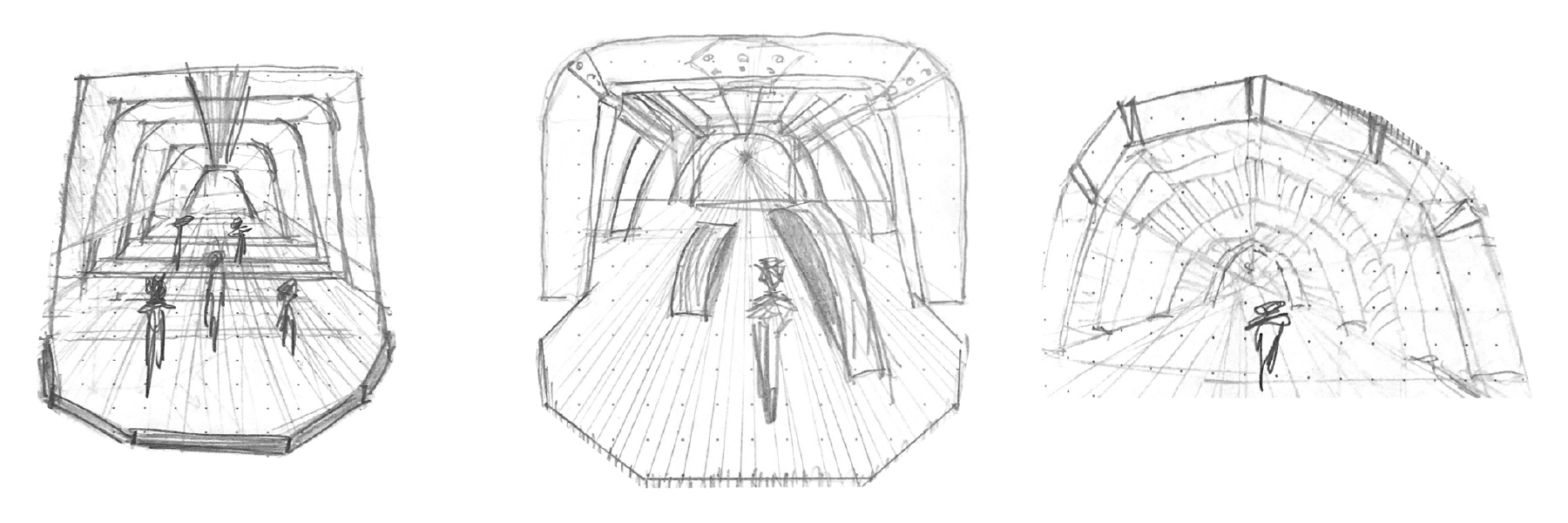
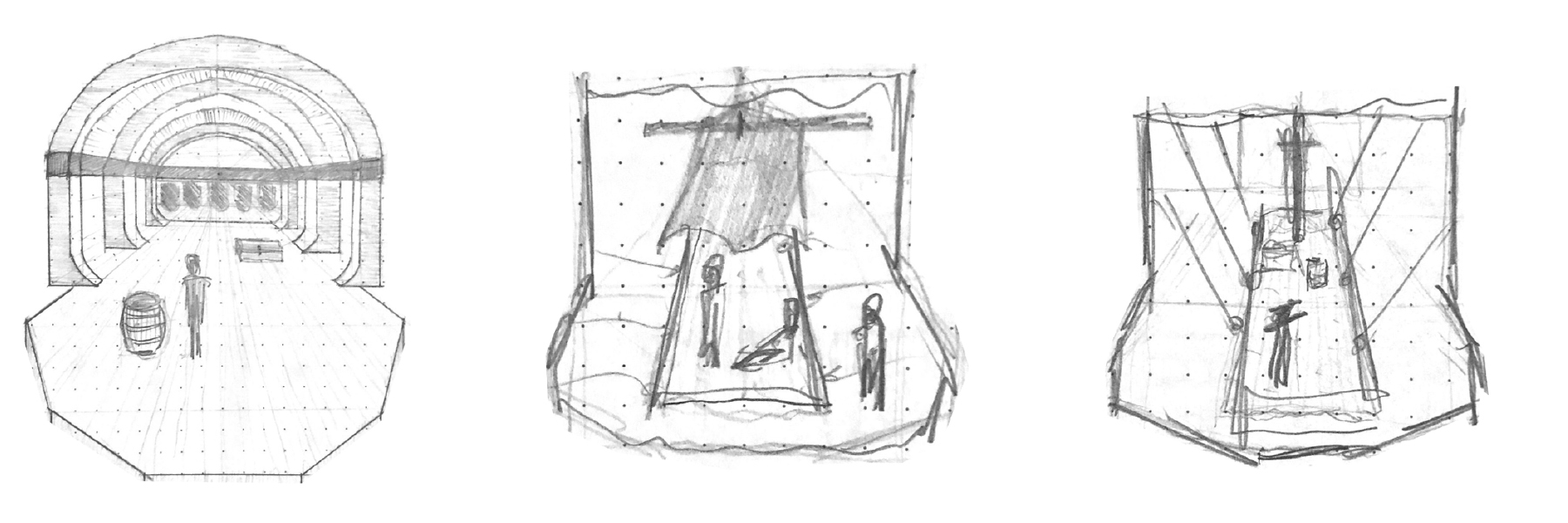
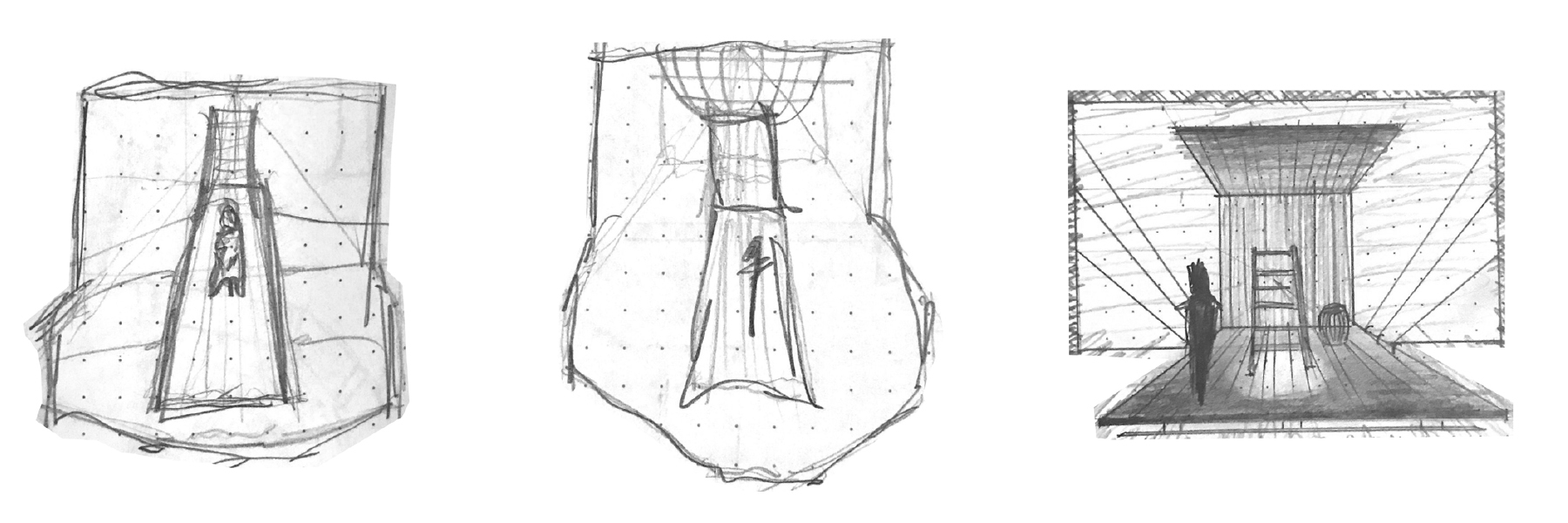
a series of thumbnail sketches allowed multiple ideas & iterations to be tested rapdily

rendering; act one, scene one

the play unfolds across many different locations; the ground plan was utilized as a tool to conceptualize movement and blocking

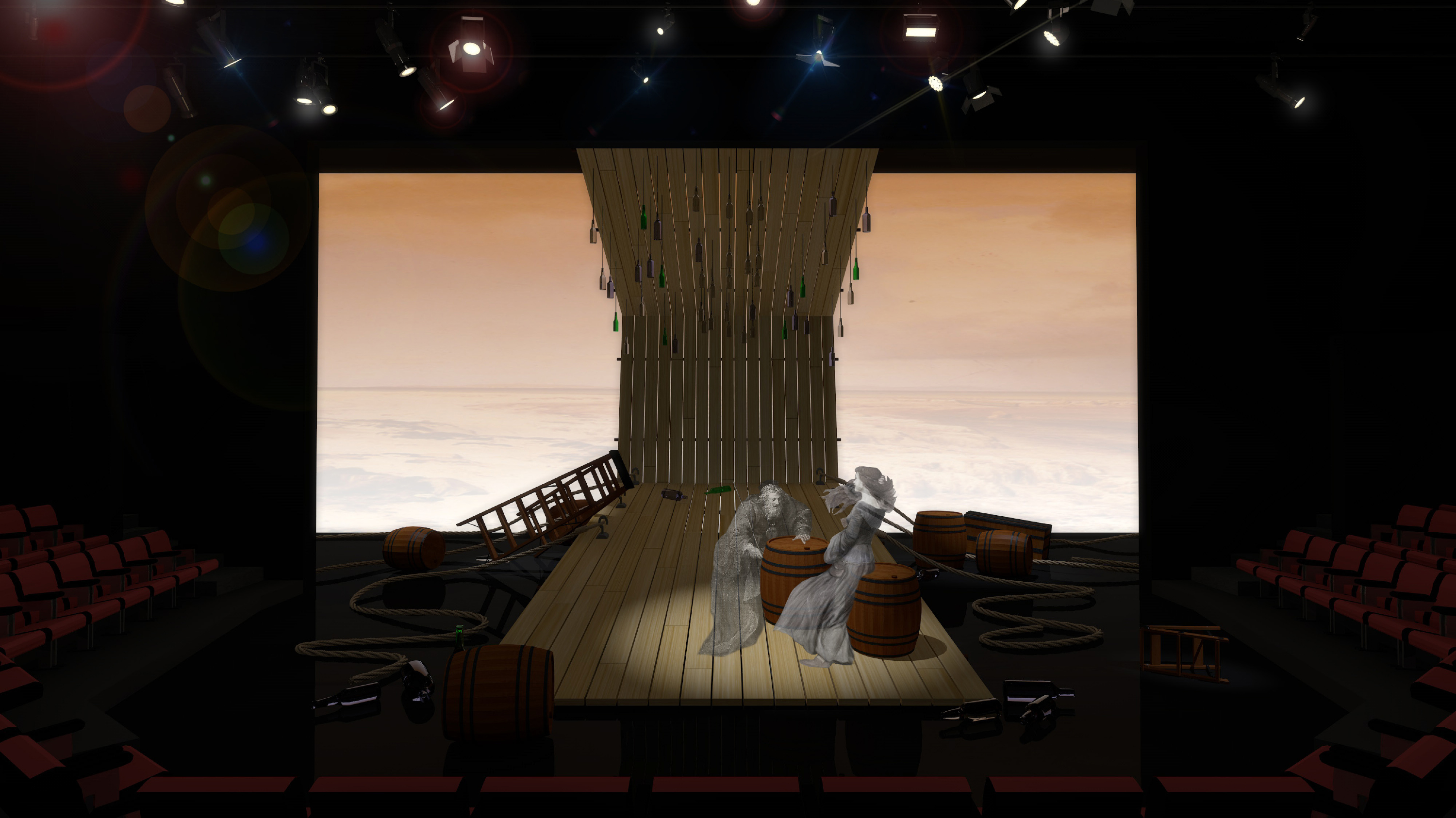
rendering; act one, scene two

an array of colored glass bottles is suspended from the overhead section of the platform; the bottles sway back and forth during times of excitement throughout the show. singing as they collide, the bottles act as windchimes that entrance and engage the audience
